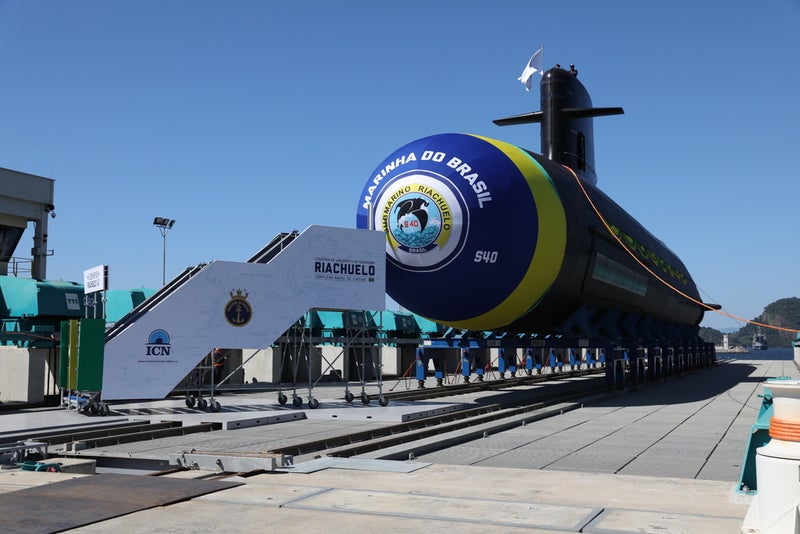
The Brazilian Navy has launched its first Scorpene-class attack submarine at the Itaguai Navy base in the state of Rio de Janeiro.
Named Riachuelo, the Brazilian-built submarine was developed by French firm Naval Group and is a modified version of the Scorpene-class diesel-powered submarine.
Scorpene can be deployed in a range of missions, including shallow water operations, anti-surface and anti-submarine warfare, special operations, offensive minelaying, and intelligence gathering.
The Brazilian Navy awarded a contract to Naval Group in 2009 to design and transfer the technology for four conventional Scorpene submarines as part of a R$35bn ($8.9bn) programme.
The company is also responsible to provide design and manufacturing assistance for the non-nuclear part of Brazil’s first nuclear-powered submarine.
According to Naval Group, Riachuelo will begin sea trials next year and is expected to be delivered in 2020.
The company will deliver the remaining three submarines as part of the contract every 12 to 18 months.
The new Scorpene submarine has been named after the Battle of the Riachuelo, where the Brazilian Navy defeated the Paraguayan Navy in 1865.
Naval Group noted that the submarine will be slightly longer than other Scorpene variants, which are operational or being built for the navies of Chile, Malaysia and India.
The Riachuelo will have an overall length of 72m and can carry 35 crew members.
When the fifth submarine is received in 2029, Brazil will join the list of nations with nuclear-powered submarines, which includes the US, Russia, France, the UK, China, and India.
The Brazilian Navy will deploy the new submarines to patrol the country’s offshore deepwaters that host vast oil and gas reserves.
Brazil President Michel Temer was quoted by Reuters as saying: “Brazil is building submarines because a nation with more than 7,000km of coastline cannot do without tools to defend its sovereignty and marine riches.”



